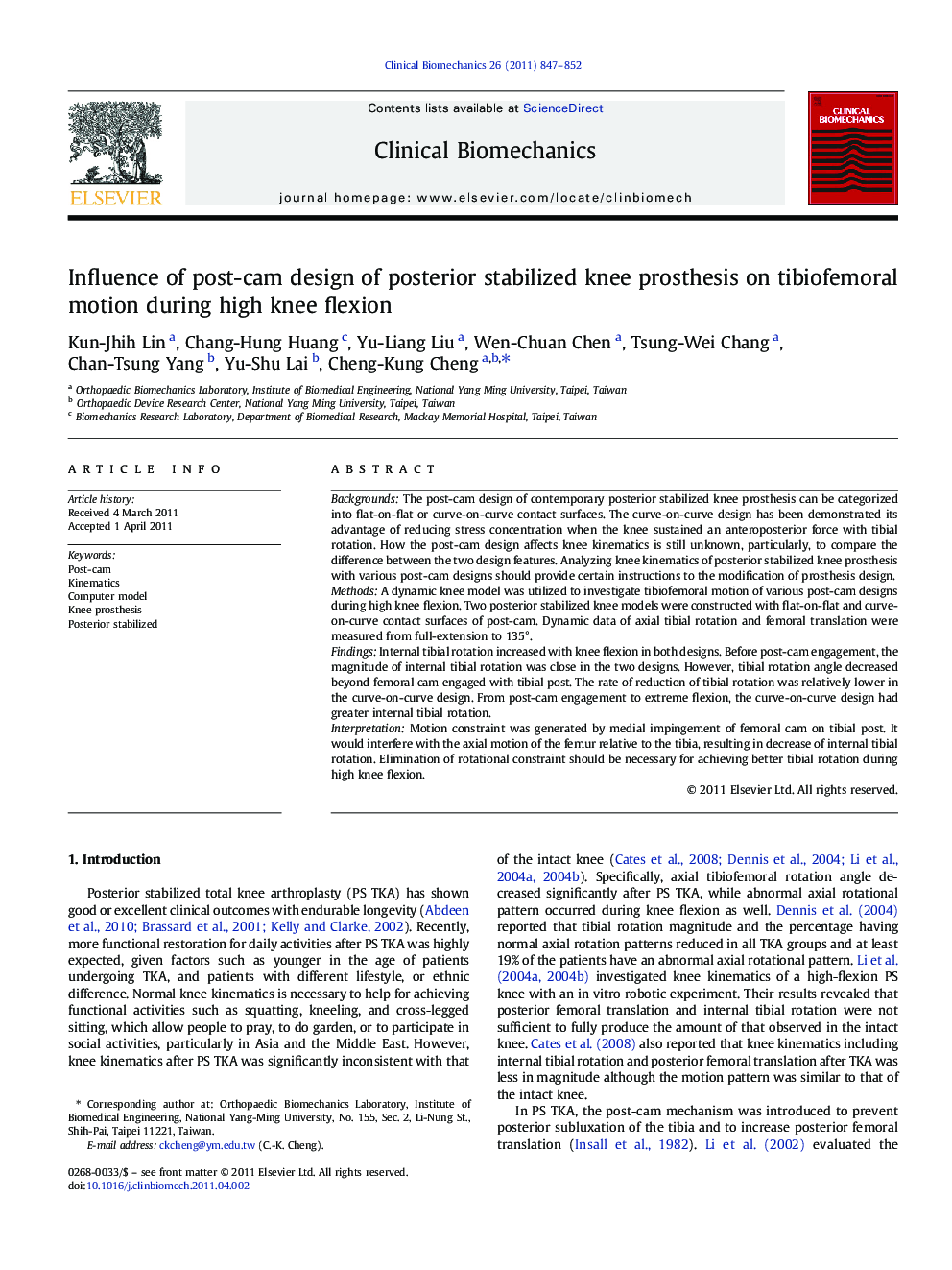| Article ID | Journal | Published Year | Pages | File Type |
|---|---|---|---|---|
| 6205245 | Clinical Biomechanics | 2011 | 6 Pages |
BackgroundsThe post-cam design of contemporary posterior stabilized knee prosthesis can be categorized into flat-on-flat or curve-on-curve contact surfaces. The curve-on-curve design has been demonstrated its advantage of reducing stress concentration when the knee sustained an anteroposterior force with tibial rotation. How the post-cam design affects knee kinematics is still unknown, particularly, to compare the difference between the two design features. Analyzing knee kinematics of posterior stabilized knee prosthesis with various post-cam designs should provide certain instructions to the modification of prosthesis design.MethodsA dynamic knee model was utilized to investigate tibiofemoral motion of various post-cam designs during high knee flexion. Two posterior stabilized knee models were constructed with flat-on-flat and curve-on-curve contact surfaces of post-cam. Dynamic data of axial tibial rotation and femoral translation were measured from full-extension to 135°.FindingsInternal tibial rotation increased with knee flexion in both designs. Before post-cam engagement, the magnitude of internal tibial rotation was close in the two designs. However, tibial rotation angle decreased beyond femoral cam engaged with tibial post. The rate of reduction of tibial rotation was relatively lower in the curve-on-curve design. From post-cam engagement to extreme flexion, the curve-on-curve design had greater internal tibial rotation.InterpretationMotion constraint was generated by medial impingement of femoral cam on tibial post. It would interfere with the axial motion of the femur relative to the tibia, resulting in decrease of internal tibial rotation. Elimination of rotational constraint should be necessary for achieving better tibial rotation during high knee flexion.
